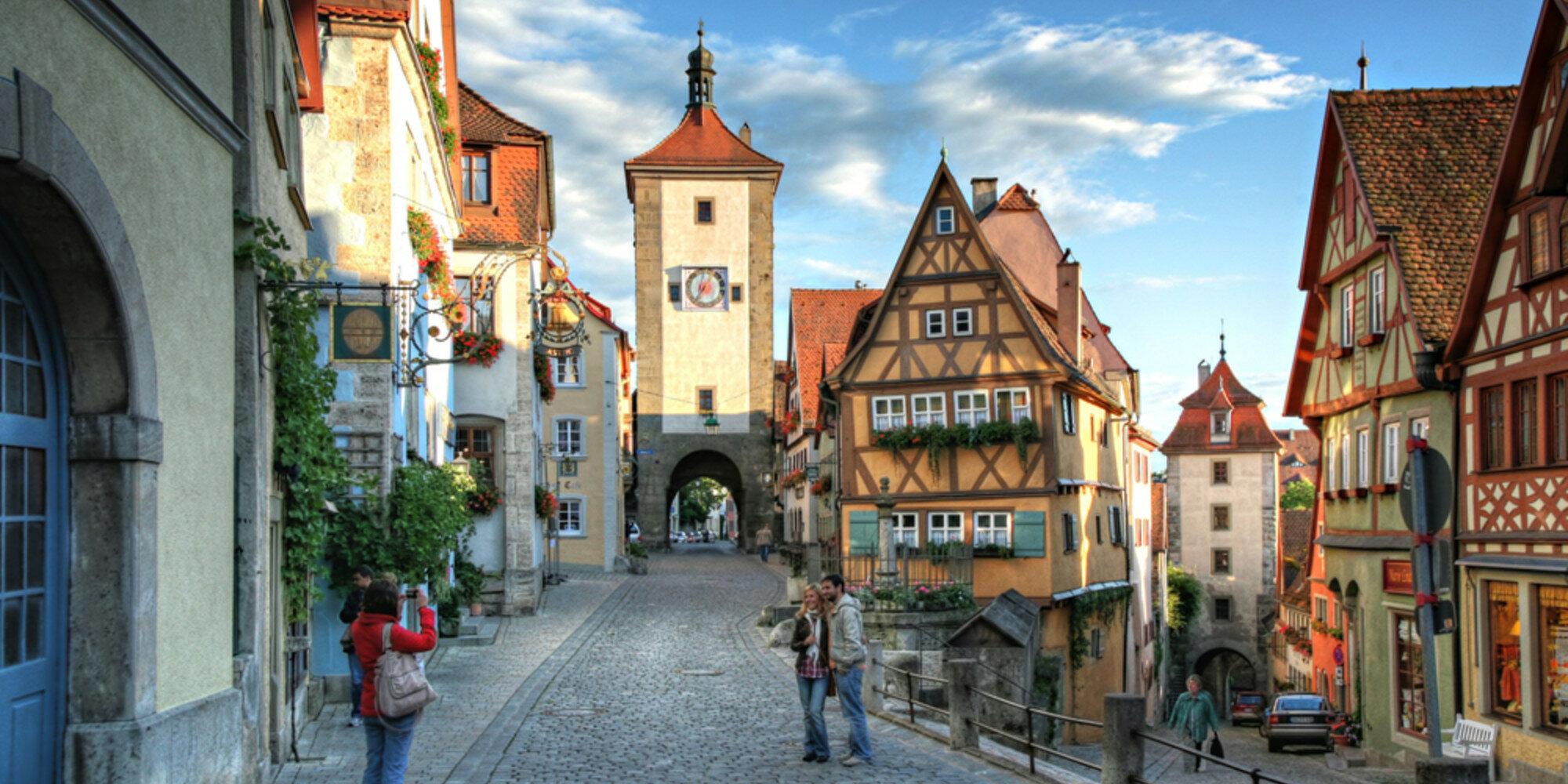Plucked From A Fairy-Tale
Many real-life locations appear as though they were plucked straight out of a book of fairy tales, from charming villages perched on cliff faces to medieval chocolate-box cities. They are all unique, charming, and full of quirky peculiarities, yet they all have a hint of magic. Come along for a virtual tour of some of the world's most amazing fairy-tale settings.
Hallstatt, Austria:
This sunset photo of Hallstatt's collection of pastel-colored buildings, surrounded by low-lying clouds and embraced by peaks, looks picture-perfect. The long history of Hallstatt, which is situated in the mountainous Salzkammergut region, started when salt mines were discovered there in prehistoric times—possibly as early as 4000 BC. A large portion of the architecture in place now is from the sixteenth century, and it is painted in a rainbow of ice cream colours.
Göreme, Turkey:
There is something beautiful about the cave buildings of Göreme, especially at night when they twinkle like a box of priceless pearls. Small anchorite groups started carving out cells to live in as early as the fourth century, which is when parts of this UNESCO World Heritage site were hewn into the rock. Built in the tenth and twelfth centuries, several of its cave churches were ornately adorned and now house vibrant figurative paintings.
Nuremberg, Germany:
:max_bytes(150000):strip_icc()/view-of-nuremberg-germany-596693579-59105a605f9b586470a90b93.jpg)
Despite having a charming appearance, Nuremberg has a sordid past. Approximately ninety percent of the Old Town was destroyed when the Nazis invaded the Bavarian city, which was first established in the eleventh century. The structures that remain today are the result of painstaking renovation utilizing the original stone, which has allowed them to keep some of their ancient elegance.
Dubrovnik, Croatia:
It's understandable why Game of Thrones, a fantasy television series, filmed scenes in the historic city of Dubrovnik. With its winding lanes of limestone and buildings set on precipitous cliffs, this gem of the Adriatic coast appears to be a fantasy land without the need of special effects. The baroque buildings of the city were finished by the 13th century, but two significant restorations have been made to them since then: one after a devastating earthquake in 1667, and the other after shelling in the early 1990s during the Yugoslav Wars.
Albarracín, Spain:
The dwellings of medieval Albarracín are a trickle of rosy-toned buildings that appear as though they have been spilled upon the mountaintop. The town, which is in eastern-central Spain, has walls and a first stronghold that date back to the tenth and thirteenth centuries. The Old Town, which includes the Cathedral of San Salvador, was constructed in the sixteenth century. The indigenous material called gypsum, which was utilized to create the structures, gives them their distinctive colour.
Castle Combe, England, UK:
With its quintessential Cotswold stone homes and meandering country roads, Castle Combe is hardly surprising that it is frequently referred to as the most picturesque village in England. The historic site was first inhabited by Celts in antiquity, and during the Middle Ages, it developed into a focus for the local wool industry. During this time, the Church of St. Andrew, an ancient water pump, and a market cross were among the many notable structures in the area.
Rothenburg ob der Tauber, Germany:

With its pastel-coloured residences and picturesque streets, Rothenburg ob der Tauber appears almost unreal. Situated along the picturesque Romantic Road in southern Germany, which winds through the beautiful regions of Baden-Württemberg and Bavaria, the town was founded around AD 950, and Rothenburg Castle was constructed approximately a century later. It is one of Germany's best-preserved medieval villages, and its allure is reminiscent of a fairy tale.
Shirakawa-gō, Japan:
Is there a tiny mountain village cuter than this one? Tucked between secluded mountains in the heart of the Shogawa Valley, Shirakawa-gō is known for its steeply roofed buildings that are both aesthetically pleasing and functional. Its rooftops are made to survive severe snowfall and are created in the Gassho-zukuri style, which translates to "constructed like hands in prayer." When seen in the winter and lit up by shimmering lights, this scene resembles a tiny fantasy land.
Houtouwan, China:
Houtouwan, a lonely fishing village on Shengshan Island off the east coast of China, was abandoned in the early 1990s and is now covered in ivy and other vegetation. It nearly appears to have been engulfed by the landscape with its fascinating green-carpeted buildings disappearing into the slopes. Even though Houtouwan is mainly abandoned, a little portion of its previous inhabitants still live there and earn money from daring visitors.
Grindelwald, Switzerland:
Grindelwald, a ski hamlet surrounded by the majestic Jungfrau, Mönch, and Eiger mountains, exudes an air of alpine beauty. It started out as a ski resort at the end of the 1800s and is still a tiny but popular destination with cosy taverns, alpine eateries, and charming lodges. The village is stunning all year round; in the summer, its steep slopes are covered in lush greenery, and in the winter, a layer of snow covers everything.

.jpg)